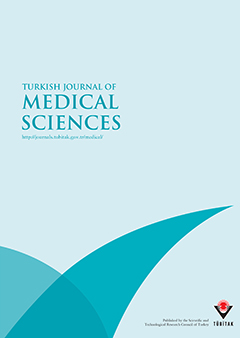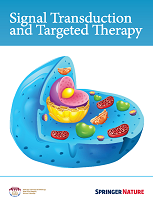A blog that publishes updates and open access scientific papers about allergy, asthma and immunology. Editor: Juan Carlos Ivancevich, MD. Specialist in Allergy & Immunology
July 23, 2023
Can development of asthma and bronchial hyperreactivity be reduced by subcutaneous immunotherapy in adult patients with allergic rhinitis?
July 22, 2023
Guidelines of care for the management of atopic dermatitis in adults with topical therapies
Sidbury R, Alikhan A, Bercovitch L et al. J Am Acad Dermatol. 2023 Jul;89(1):e1-e20. doi: 10.1016/j.jaad.2022.12.029.
Background
Objective
Methods
Serum Vitamin D Is Inversely Associated with Blood Eosinophil Count Among Adults with Allergic Asthma
OBJECTIVE: To evaluate the role that serum vitamin D concentration plays in the number of eosinophils in peripheral blood in adults with allergic asthma.
MATERIAL AND METHODS: A total of 142 patients were categorized based on different cutoff points for eosinophils: ≥200, ≥300, ≥400, and ≥500 cells/mL. The vitamin D concentration was stratified into <20 and ≥20 ng/mL. The association between vitamin D (independent variable) and eosinophils (dependent variable) was explored using multivariate analysis.
July 21, 2023
LMAN1 is a receptor for house dust mite allergens
Cell Rep. 2023 Mar 28;42(3):112208. doi: 10.1016/j.celrep.2023.112208.
Development of therapies with the potential to change the allergic asthmatic disease course will require the discovery of targets that play a central role during the initiation of an allergic response, such as those involved in the process of allergen recognition. We use a receptor glycocapture technique to screen for house dust mite (HDM) receptors and identify LMAN1 as a candidate. We verify the ability of LMAN1 to directly bind HDM allergens and demonstrate that LMAN1 is expressed on the surface of dendritic cells (DCs) and airway epithelial cells (AECs) in vivo.
July 20, 2023
Development of a Skin-Directed Scoring System for Stevens-Johnson Syndrome and Epidermal Necrolysis: A Delphi Consensus Exercise.
Waters M, Dobry A, Le ST, et al. JAMA Dermatol. 2023;159(7):772–777. doi:10.1001/jamadermatol.2023.1347
Key Points
- Question Is there a need for an EN skin-directed scoring system, consistent EN terminology, a better understanding of orphologic progression, and/or identification of the most-affected sites?
- Findings This Delphi consensus exercise determined that there is a need for a skin-directed scoring system for EN with consensus achieved regarding terminology, morphologic traits, and most-affected locations of involvement.
- Meaning The findings of this consensus exercise may be used as a framework for developing a skin-directed EN grading tool with the goal of precisely monitoring disease severity and changes during hospitalization.
Abstract
Importance Scoring systems for Stevens-Johnson syndrome and epidermal necrolysis (EN) only estimate patient prognosis and are weighted toward comorbidities and systemic features; morphologic terminology for EN lesions is inconsistent.
Objectives To establish consensus among expert dermatologists on EN terminology, morphologic progression, and most-affected sites, and to build a framework for developing a skin-directed scoring system for EN.
July 19, 2023
TRP (transient receptor potential) ion channel family: structures, biological functions and therapeutic interventions for diseases
- Review Article
- Open Access
Abstract
Transient receptor potential (TRP) channels are sensors for a variety of cellular and environmental signals. Mammals express a total of 28 different TRP channel proteins, which can be divided into seven subfamilies based on amino acid sequence homology: TRPA (Ankyrin), TRPC (Canonical), TRPM (Melastatin), TRPML (Mucolipin), TRPN (NO-mechano-potential, NOMP), TRPP (Polycystin), TRPV (Vanilloid). They are a class of ion channels found in numerous tissues and cell types and are permeable to a wide range of cations such as Ca2+, Mg2+, Na+, K+, and others. TRP channels are responsible for various sensory responses including heat, cold, pain, stress, vision and taste and can be activated by a number of stimuli.
Early introduction is not enough: CSACI statement on the importance of ongoing regular ingestion as a means of food allergy prevention
- Position article and guidelines
- Open Access
Allergy, Asthma & Clinical Immunology volume 19, Article number: 63 (2023)
Both randomized controlled and observational studies demonstrate a reduction in the risk of food allergy with early introduction of common allergens, in particular peanut and egg. While these studies vary in design, population, dose and allergen used, there is a strong and consistent trend that early introduction has a role in the prevention of food allergy. As a result, guidelines clearly and consistently recommend early allergen ingestion (commonly operationalised as between ages 4–6 months), often in particular for higher risk populations, as a means of food allergy prevention.
Comorbid asthma in patients with chronic rhinosinusitis with nasal polyps: did dupilumab make a difference?
- Research
- Open Access
BMC Pulmonary Medicine volume 23, Article number: 266 (2023)
Abstract
Background
The clinical heterogeneity of chronic rhinosinusitis (CRS) and bronchial asthma is attributable to different underlying inflammatory profiles. However, the similarity between CRS with nasal polyps (CRSwNP) and type-2 asthma pathophysiology speculates that one biological therapy could affect both comorbidities. Despite dupilumab, a monoclonal antibody that targets IL-4α and IL-13 receptors, being used in patients with nasal polyps and severe asthma, real-life data about its efficacy in improving the quality of life and patient symptoms is still lacking.







